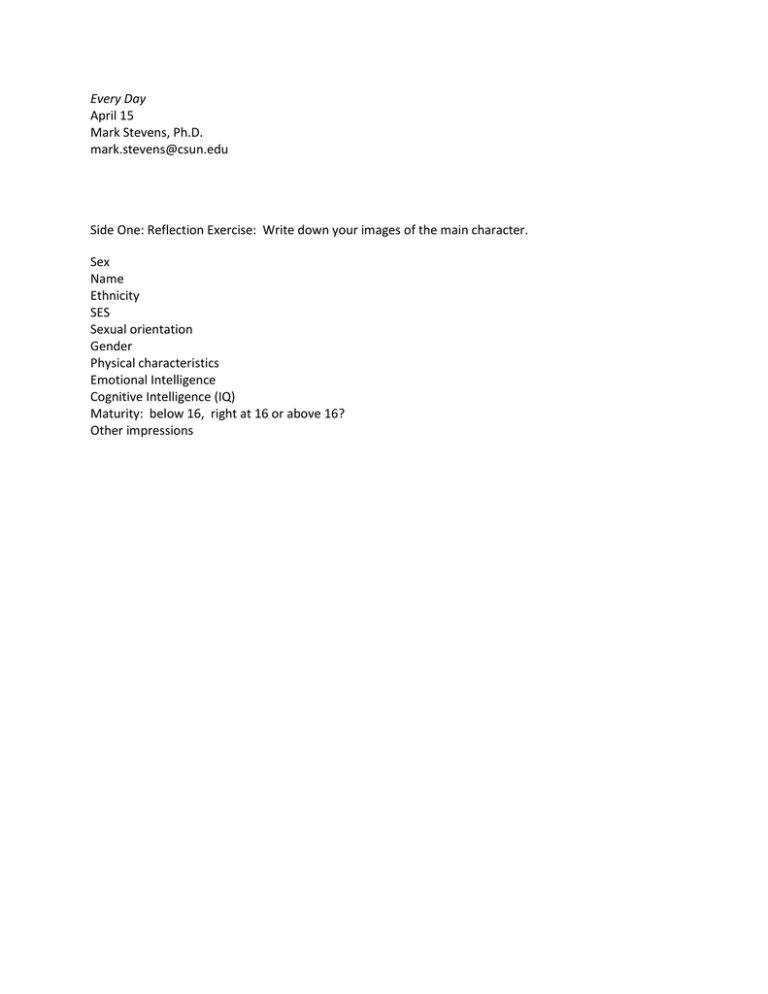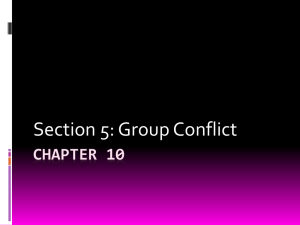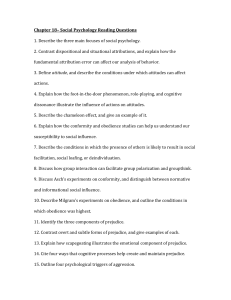facilitated discussion handout
advertisement

Every Day April 15 Mark Stevens, Ph.D. mark.stevens@csun.edu Side One: Reflection Exercise: Write down your images of the main character. Sex Name Ethnicity SES Sexual orientation Gender Physical characteristics Emotional Intelligence Cognitive Intelligence (IQ) Maturity: below 16, right at 16 or above 16? Other impressions Side Two: Discussion questions that could be used in reference to the book 1. How do you build empathy for others? Lessons of empathy in the book. 2. What were some of the ethical dilemmas presented in the book? How are these dilemmas reflective of situations you have dealt with in the past or dealing with now? 3. How do you integrate lived experiences into your sense of identity? How was this integration portrayed in the book? 4. Comment on this statement: We are not only ourselves. We are everyone we meet. And, we are people we have never met. Additional notes from this workshop: Q1: for some readers, Finn Taylor seems to be written as oddly unsympathetic: the book itself seems unable to avoid a sense of discomfort about his obesity. Do you agree? Why? What’s being reflected? Q3: Assignment idea: Pick a prejudice that you’d like to overcome. Notice the causes of that prejudice: fear, ignorance, your upbringing…..What will you have to give up to unlearn this prejudice? Q4: You could say that A is a sculpture formed out of all the selves he/she has encountered (or a layered palimpsest). You could also talk about A’s “ghosts of opportunity” in terms of identity. And our own “ghosts of opportunity.” A got to (had to?) live in the present a lot. A is all inside—no outside. About the reflection exercise on Side One: The book invites the reader’s reflections about prejudice. All of us have prejudices. Sometimes it’s a prejudice AGAINST someone else; other times, a prejudice IN A PERSON’S FAVOR. The reflection exercise can be used to help students (and others) examine their “inner movie”: the images and projections and concepts they create to understand other people. Mark suggests that we see other people (and the world around us) through lenses that have to do with who and how we are. His term for this phenomenon is “projection.” He offered the example of what might happen if somebody cut you off on the freeway. If you have had a bad day, you’re very likely to want to honk your horn (etc.). But if everything has gone really well for you that day, you might instead feel empathy for the other person and wonder what is going on with that other person. The point is that the internal self is always relevant.




